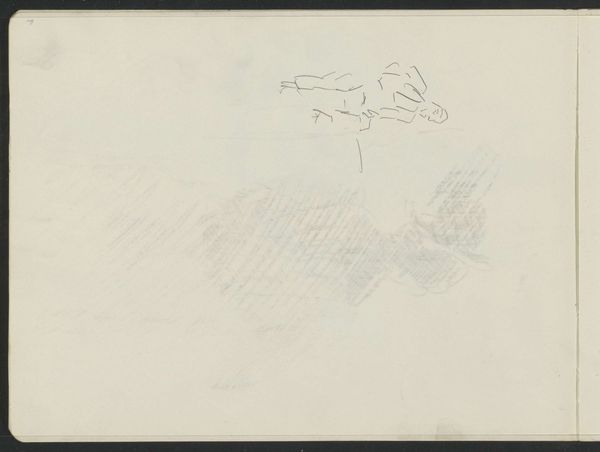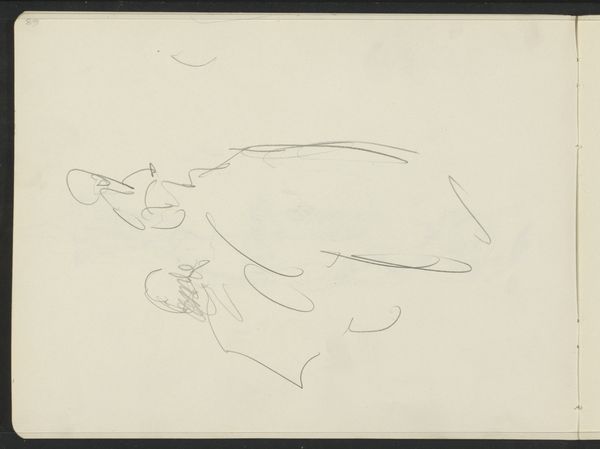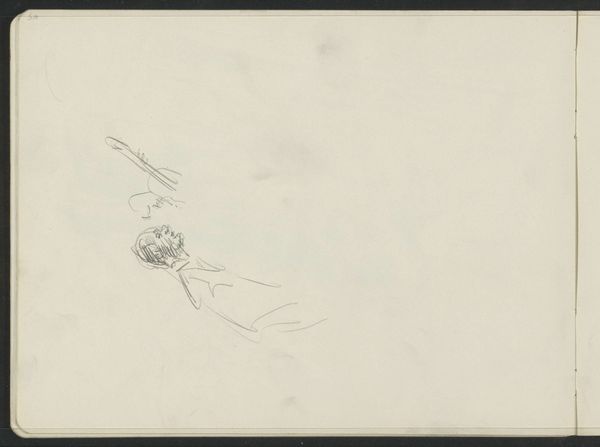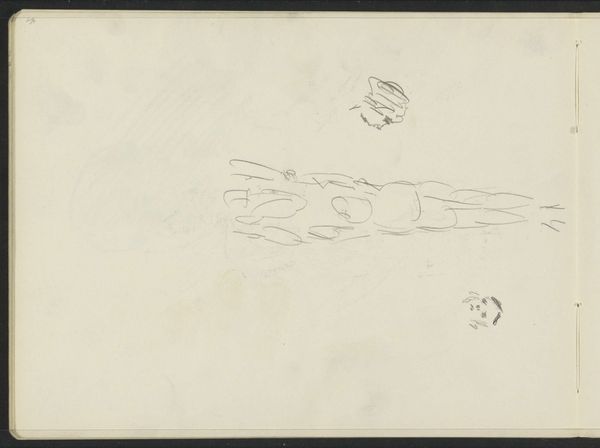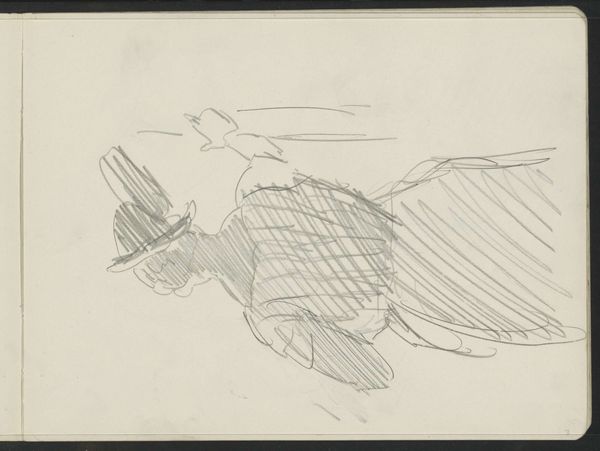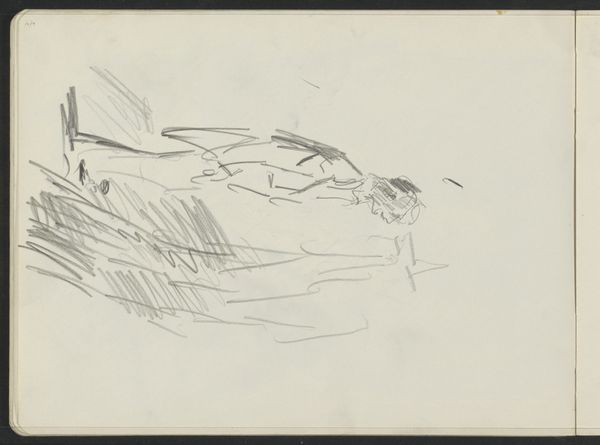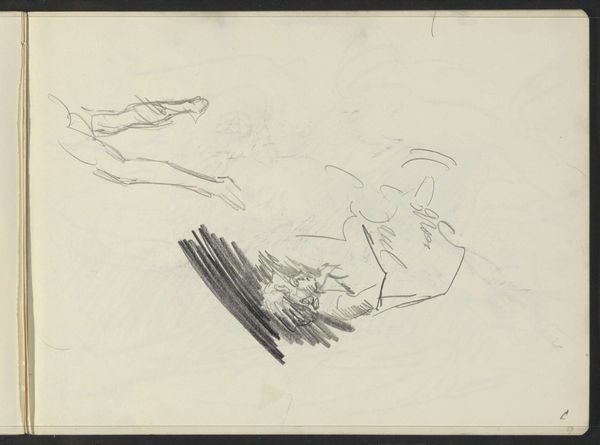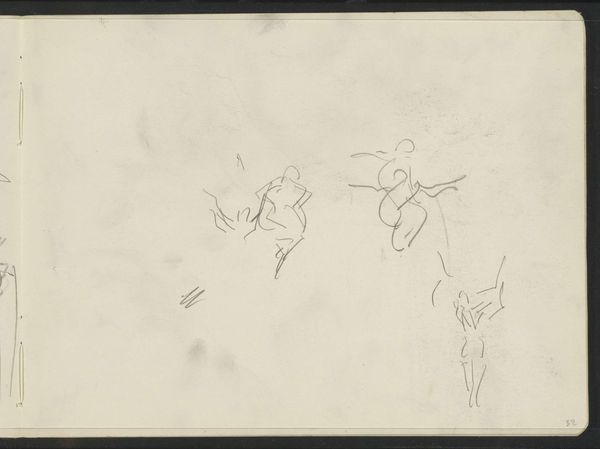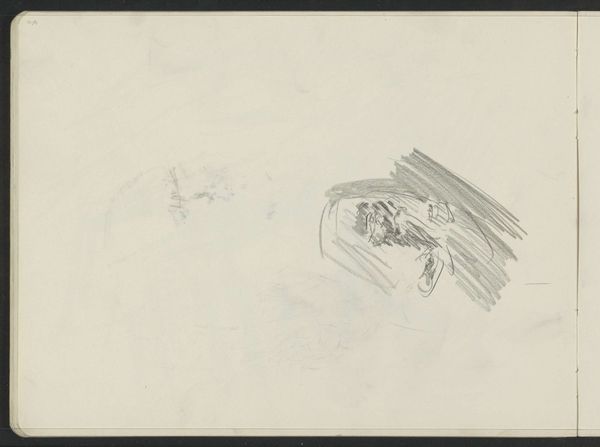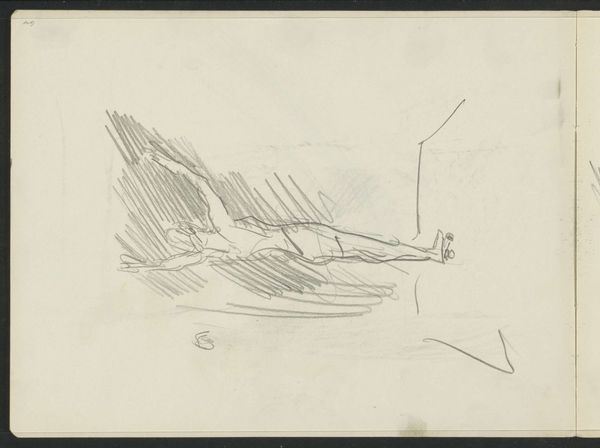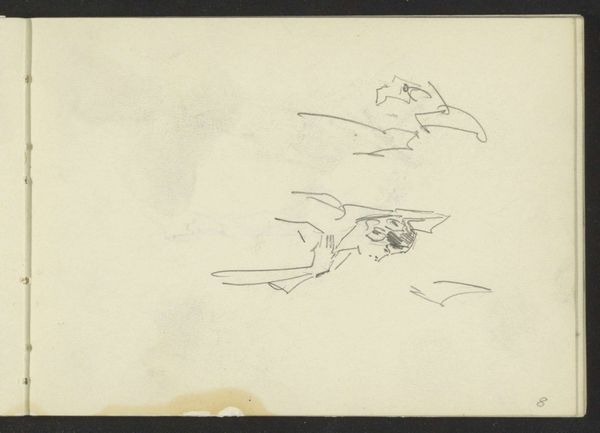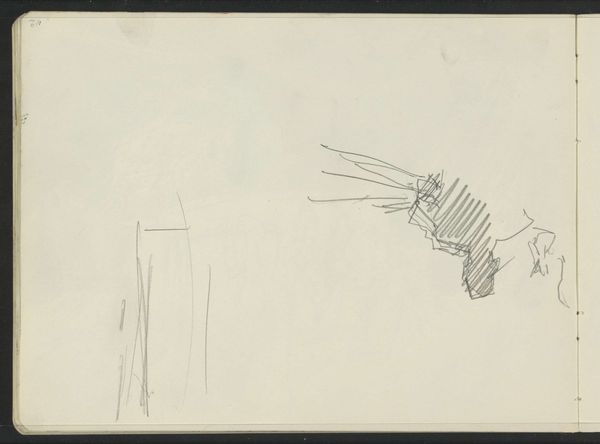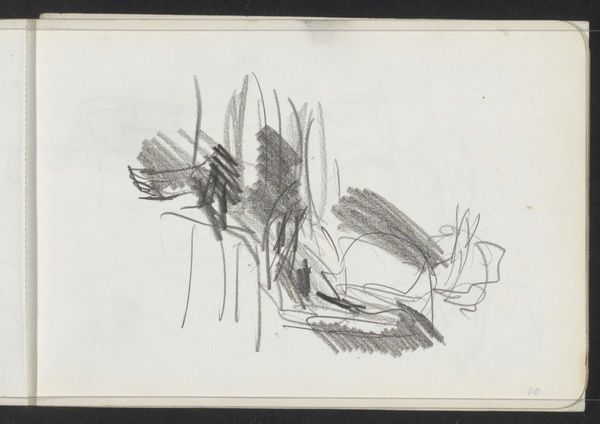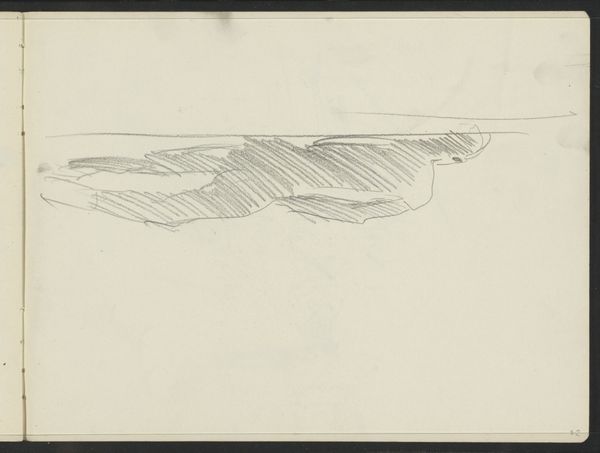
Copyright: Rijks Museum: Open Domain
Editor: So here we have Isaac Israels' "Figuurstudie," a pencil drawing from somewhere between 1915 and 1925, currently held at the Rijksmuseum. It strikes me as really unfinished, almost fleeting. What's your take on it? Curator: For me, this sketch provides insight into Israels' artistic process. Look closely at the paper – its texture, the way the pencil markings vary in pressure. He's experimenting here, less concerned with a finished product and more focused on capturing the essence of the figure, but most likely more fascinated with light as reflected on the volume. How might the cost and availability of paper during that period have influenced this style? Editor: That's a good point. It definitely feels like he was trying to get the most out of his materials. It's fascinating to consider the economic context! The way Israels used and re-used the paper shows also respect, not a form of poverty, if that makes sense? Curator: Exactly! And consider the broader artistic landscape. Impressionism challenged the academic emphasis on highly polished, finished works. Pieces like this elevate the act of drawing, the labor, the hand, and value it independently of achieving a final “masterpiece.” It’s democratizing, in a way, because it challenges those hierarchical divisions between "high art" and more accessible modes of production. It almost begs the question - should 'high art' even exist in the first place? Editor: I never really thought about it that way, in terms of challenging the traditional value system through the simple act of sketching and then the drawing being proudly put on display, which implies accepting any technique, even those considered less conventional. That is something that you don't always think about. Curator: Precisely. It highlights that the material act of artmaking, and its availability and context, holds significance far beyond aesthetic value. And to make these works public, it makes even more sense. Editor: Well, thinking about it this way, makes this piece much more layered and profound than it initially seemed. Thank you for pointing it out.
Comments
No comments
Be the first to comment and join the conversation on the ultimate creative platform.
